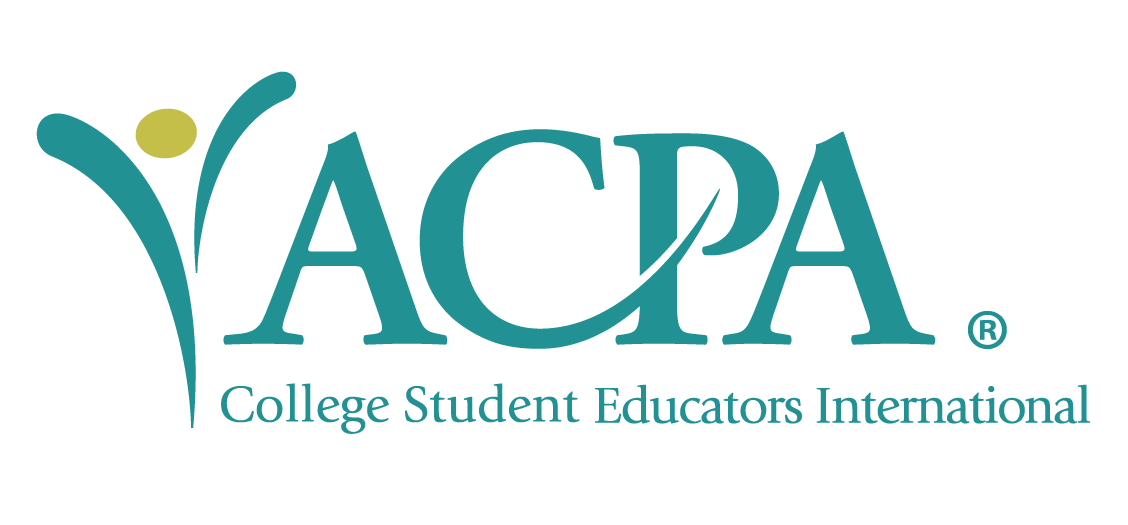Monday, 16 December 2019 – 1:23pm
Supporting Students’ Career Aspirations through Campus Involvement
My passion for working with students, like many in the field, was sparked by experiences as an undergraduate student leader. My involvement experiences, internships and off-campus job all helped me to develop professionalism, explore work environments and industries and learn time management skills. My first position after graduation was working at my alma mater, advising student leaders planning service in the community. For the last almost two years, I have worked as a Career Advisor for Exploratory and Humanities students in my Graduate Assistantship.
Career services can be a scary venture for many students, particularly first-generation and other underrepresented groups who may feel intimidated by the career development process. Through collaboration, career services and campus involvement can help to bridge the gap for our students and allow them to see the tangible and employable skills associated with their campus leadership. Below I have outlined some examples of ways to collaborate across campus to support students’ career aspirations within your activities office.
Use Engage to Create Career Centered Pathways
The pathways feature within Engage allows for strong collaboration between academic and career units and more “traditional” student affairs functional areas, such as Leadership and Service or Student Involvement. By using the pathways feature to either create career pathways for your student leaders/organization members or implement career aspects throughout existing pathways, students are exposed to career-related topics. A few examples of this might look like:
- Asking students to develop 2-3 resume bullet points summarizing their volunteer experiences as part of reflecting on a service-learning trip.
- Requiring students to have their resume reviewed by a career center staff member to apply for leadership positions within your office.
- Adding reflection questions asking how an experience or position caused them to think critically or differently about their future career goals.
Create Collaborative Programming to Meet Students Where They Are
The student activities center is coined the “campus living room” for a reason. Students often spend their time in between classes in the offices of student organizations, on the couch outside their advisors’ office or using whiteboards in a collaborative workspace in the Student Union. By the nature of design, students are not lounging informally or hanging out in many career offices. Collaborating with career services staff to bring them to where students are, can help make the process less intimidating. This might look like:
- Inviting career services professionals to hold drop-in hours (discussing interviewing, career exploration, resumes, etc.) in your student organization space.
- Create a digital badging program that recognizes the skills students develop throughout their campus involvement. Join the CSI and Campus Labs for a webinar on how to create a digital badging and micro-credentialing program on December 18th at 2 pm. Register here to attend.
- Hosting a Community Involvement fair (picture volunteer fair meets internship fair) for students to network to get involved or secure a part-time job. Bonus: This also saves the time of your campus partners to not have to attend two separate fairs during the semester, and hopefully leads to a higher turnout at the event!
- Hosting a networking event between student organizations on campus. This will allow students to practice their networking skills in a lower-stakes environment, while also encouraging collaboration between student leaders.
- Conducting an “organizational branding” workshop with career services staff. Often professional topics are more approachable when kept in the context of a student’s experience. Rather than personal branding, allow students to practice an elevator pitch about their organization. Then help them translate this newfound skillset to branding themselves professionally at conferences.
- Creating a student leadership award centered on internship and/or part-time employment experiences. This not only helps students to see their on or off-campus job as an important part of their development (and as celebrated by the university), it is also inclusive by acknowledging students who may not have the financial means or time to get involved in a campus leadership position, but is a shift manager at their part-time job.
Incorporate Employment Practices into the Structure of your Org
As we all know, there are countless practices associated with working a full-time job that many of us are not aware of until we land our first post-grad opportunity. While they may seem common practice to us, things like an end of the year evaluation, skills assessment, meeting minutes and strategic planning are aspects across many professional workplaces. This might look like:
- Incorporating pre and post year skills-assessments based around the National Association of Colleges and Employers (NACE) Eight Career Competencies to measure student’s skills developed through involvement and/or leadership roles.
- Having a structured, end of the year evaluation meeting with student leaders to evaluate their time in the role, learn about their experiences within the organization/your office and discuss how these skills will translate to an internship or job opportunity down the line.
- Helping students to make connections between tasks that might seem mundane (looking at you, meeting minutes) but are transferrable to future roles and professional practices.
This list is by no means an exhaustive example of ways Career Services and Student Involvement can collaborate on campuses. I am excited to hear about ways you may be working with career services already – or ideas that have been sparked! Feel free to send me an email at samantha.lamar@louisville.edu to share your stories and successes.
With Gratitude,
Sam La Mar
Graduate Assistant for Career Engagement
University of Louisville

